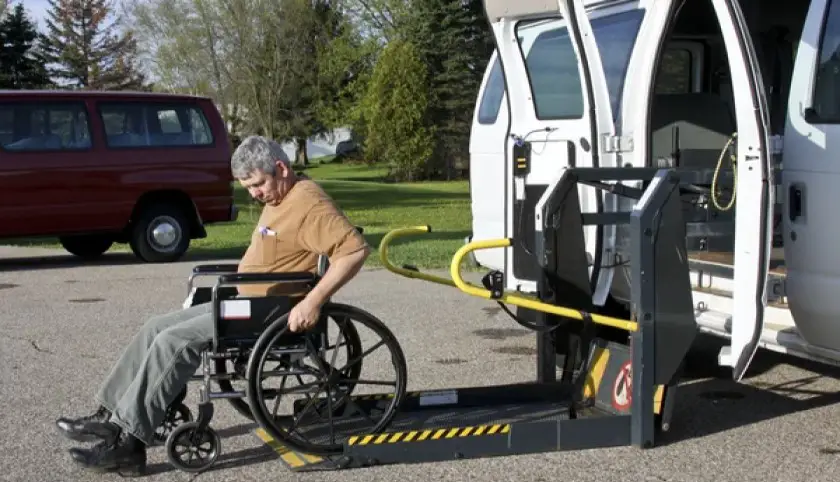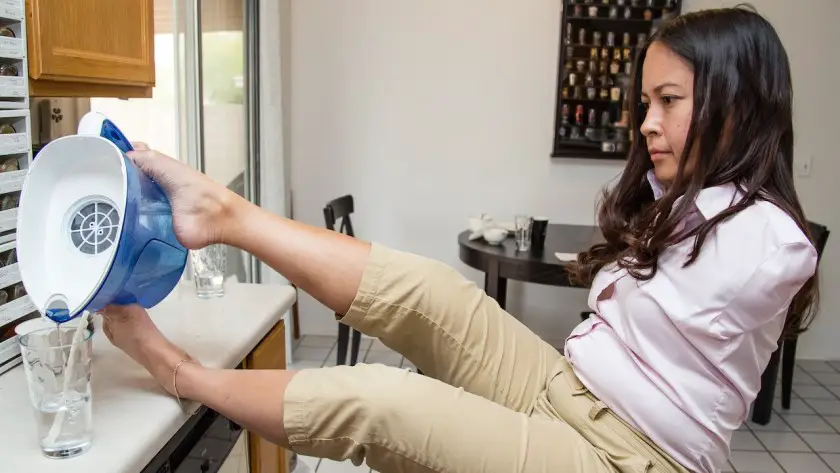The type of wheelchair you use depends on the type and manner of injury or disability you have.
The more restrictions you have with your body movements the higher your chances of using an electric wheelchair. And the lesser the restriction you have with your body movements the higher your chances of using a manual wheelchair.
You must also note that an elderly would most likely require a caregiver no matter the type of disability or chair being used.
At one point in time or the other, you would have to go around with your personal belongings or have some load you need to carry.
As a wheelchair user, attempting to carry your personal belongings can be a bit of a hassle because wheeling yourself already requires much strength from your upper body. Adding to that stress with your items will only result in muscle injuries.
Table of Contents
- Items You Can Carry in Your Wheelchair
- Things You Shouldn’t Carry in Your Wheelchair
- How to Carry Things in a Wheelchair
- How Much Load Can You Carry?
- Functions of Wheelchair Carriers
- Important Tips to Note before Carrying Items in a Wheelchair
Items You Can Carry in Your Wheelchair
You can carry everyday items like phones, books, water bottles, keys, laptops, food items, groceries, medications, purse, ID, money, diapers, medical reports, assistive devices like oxygen cylinders, extra batteries, and mobility aids like canes or crutches, umbrellas, chargers, snacks, blankets, and other personal belongings.
Related: How to Transfer a Senior from Wheelchair to Bed Safely
Things You Shouldn’t Carry in Your Wheelchair
It is not advisable to carry heavy items on your laps, whether you are being wheeled by yourself or a caregiver.
It is also not advisable to hold on to heavy nylon bags with your teeth or hang them around your neck because it will only cause further damage to your condition – considering you are already being restricted.
You might ask, how then do I go about carrying items with my wheelchair? Read on for solutions.
How to Carry Things in a Wheelchair

You can move your everyday needs from one place to another in your wheelchair with the aid of wheelchair bags/carriers or accessories.
For safety reasons, it is wise to get wheelchair accessories designed to hold/carry items – whether household items, groceries, everyday items, or other assistive devices that will aid your mobility.
The major goal of these accessories is to help you in carrying your everyday necessities conveniently. You can even attach them yourself without using complex tools or equipment.
Related: How to Get a Wheelchair Van Donated to You for Free
Wheelchair Accessories
Wheelchair accessories are functional items and attachments added to a wheelchair to make it more useful, versatile, and/or attractive. They also make you look smarter, portable, and stylish (depending on your taste).
They can be attached to all types of wheelchairs and they help in securing your essential possessions. So, no matter the type of wheelchair user you are – elderly, adult, student, or child – these accessories are sure to help you feel confident, liberated, comfortable, and safe from injuries and strains.
Below are different types of bags, carriers, and accessories that can assist you in carrying your personal belongings and other items.
- Wheelchair backpacks
- Fleece wheelchair armrest pouches
- Wheelchair cane carrier
- Crutch holder for wheelchair
- Standard wheelchair seat backpacks
- Side access bags for wheelchairs
- Cup holders, Lap trays, Luggage carriers
- Deluxe wheelchair seat backpacks (very suitable for power wheelchairs)
- Standard saddle armrest bags
- Front armrest bags
- Cargo shelf under seat bags
- D and E-size Oxygen Tank Holder for wheelchairs
- Privacy catheter bag cover
- Down-in-front under seat wheelchair bags
- Wheelchair armrest pocket bags
- Deluxe wheelchair saddle armrest bags
How Much Load Can You Carry?
The amount of load you can carry depends on the type of wheelchair you are using.
An electric wheelchair allows for more load because it is motorized and is more flexible with the additional weight, unlike a manual wheelchair.
The more load you carry the heavier your manual wheelchair gets. Hence, your load carriage is limited.
Large backpacks might drag on the floor behind you, tote bags attached to the armrests or push handle behind you might impede your wheel movements. This can particularly become difficult for you, especially if you’re wheeling yourself. It also makes it difficult for your caregiver to wheel you smoothly.
Related: How to Ship a Wheelchair (Complete Guide)
Functions of Wheelchair Carriers

Wheelchair packs, bags, tote bags, and pouches allow you to carry or store personal items like books and groceries on your wheelchair. They are so flexible and can serve many functions that suit your individual tastes and needs.
Undercarriage bags, also known as bum bags, go around the seat frames and clips. The strap or sling goes under the cushion or seat of the wheelchair, so this allows it to stay firm without falling. They can be used to store some of your belongings that you won’t need too often.
If the manual wheelchair push handles are able to cave in, are foldable, or can be turned, then a backpack is a great choice. Otherwise, short tote bags are a good choice to hang on your push handles. They can store items like books, medical reports, umbrellas, water bottles, and light groceries.
Important Tips to Note before Carrying Items in a Wheelchair
Don’t store any valuables in the wheelchair backpacks. Also, don’t use these carriers to carry long or unusual shaped items that can tear your carriage bags.
You have to know what you want to use whatever bag you attach for. It also differs with individuals – elderly, student, adult.
So, for example, a side access bag will be suitable to drop off your phones, money, or keys when you want/need to visit family and friends. Armrest pouches can be suitable for diapers (for the elderly), medications, and so on.
A backpack is suitable for carrying textbooks and hand notes for college; a large tote bag will be suitable to accommodate your shopping needs like groceries.
Be sure to choose a bag that is durable and of quality standard because it will be prone to more tear and wear than your regular bag. You need a bag that wouldn’t fray or have the seams coming out after just a few weeks or months of usage.
When choosing a bag, make sure that you have easy and flexible access to the items inside the bag to avoid being clumsy and scattered.
For example, when using a wheelchair backpack, make sure that the trunk of your body is flexible enough to move left or right to reach out to the items in your backpack. Otherwise, make sure someone is available to help you.
Ensure you attach anti-tippers to your manual wheelchair because it will help to prevent your wheelchair from tipping over backwards when it is loaded with items or your belongings.




